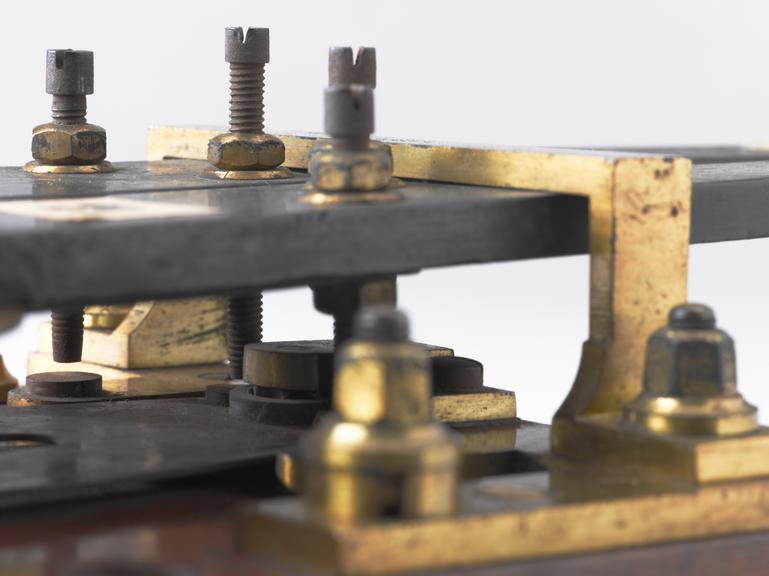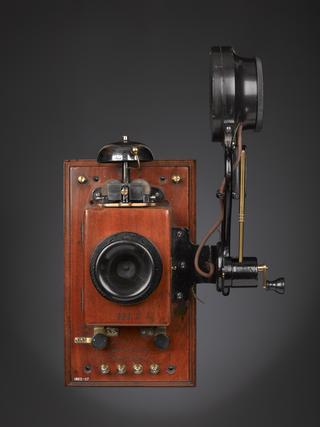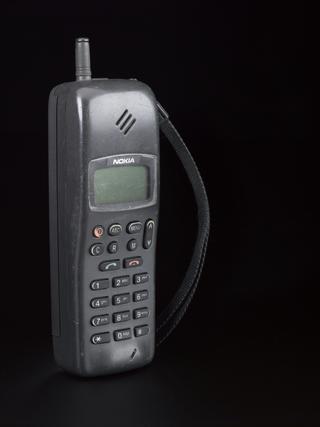
Double-current telegraph key, 1830-1900
- Made:
- 1830-1900 in United Kingdom
- maker:
- General Post Office








Double-current telegraph key, probably made and used by the Post Office, British, 1830-1900.
With a single-current telegraph key the position of the relay is restored to the normal position when current ceases by a magnetic bias or by a spring in tension. In other words, signal currents only flow in the line when the key is depressed. In the double-current system a current in the reverse direction is used to restore the relay to the spacing side. This example is similar to those used with the Bright's bell, or acoustic telegraph.
Details
- Category:
- Telecommunications
- Object Number:
- 1953-111
- Materials:
- wood (unidentified), metal (unknown), copper (alloy) and mother-of-pearl
- Measurements:
-
overall: 60 mm x 130 mm x 230 mm, .86 kg
- type:
- telegraph
- credit:
- Donated by the Institution of Electrical Engineers




